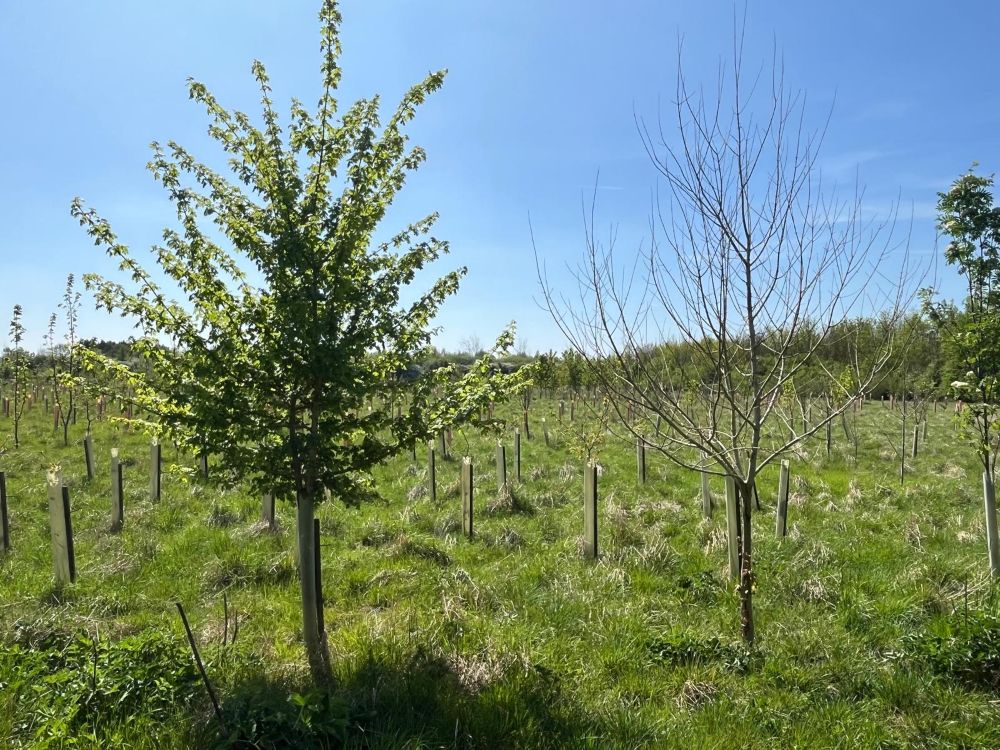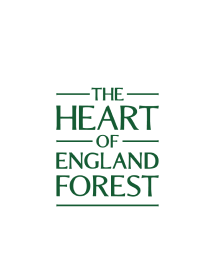Our views on forest management
We are creating and conserving a huge native broadleaf Forest on land that we own. Find out more about our views on managing the Forest and our position on issues such as pest control and the use of plastics below.
Weed control
Ragwort and thistles are weed species which can populate areas of recently planted trees. Once the trees close canopy, these weeds will be shaded out, but until this takes place they can spread rapidly and need to be controlled. Seeding into neighbouring agricultural and grazing land is of particular concern, and as responsible land managers we need to control these weeds to ensure they do not impact neighbouring land used for grazing animals or arable and to comply with relevant legislation.
To control weeds we pull, spray herbicide, or cut, with a focus on a 200-metre buffer where we are a neighbour to sensitive land such as arable or pasture.
We undertake a weed control programme each growing season and respond to neighbour requests promptly where needed. We are also designing our new woodlands to reduce the risk of weed invasion.
Ragwort is a native plant, and our management will not seek to eradicate it from our land. It is a valuable plant for wildlife, especially to pollinating species, and we recognise these benefits whilst seeking to avoid negative impacts to our neighbours.
We encourage anyone with a concern about injurious weeds on our ground adjacent to their property to please get in touch, so that we can work together to resolve any issues. Please email info@heartofenglandforest.org and one of our team will come to meet you to investigate your concerns and take appropriate action. Please share a marked-up map or What3Words reference to help us easily identify the area.
Reducing wildfire risk
Wildfires are a threat to the nation’s forests as climate change leads to more frequent hot, dry weather and droughts. The Heart of England Forest takes this risk seriously and has measures in place to manage our land to reduce the threat and impact of any wildfire.
The risk of wildfire usually peaks in late spring with a secondary peak in autumn. However, when there are extended dry and hot periods throughout the summer, the risk will increase. The key factor is fuel load – dead or dry grass, bracken, as well as plants like gorse or broom, can ignite readily, and result in wildfires spreading. On the Heart of England Forest land, we have areas of grass, which can create a fuel load and could be a fire risk. Our woodland areas are predominantly broadleaf, which have a lower fire risk compared to a conifer plantation.
To manage the wildfire risk, we cut fire rides early in the growing season. This reduces the fuel load in the forest and stimulates the growth of fresh green grass, which is much less flammable than dry grass. These rides dissect the forest and are a key way to stop fires from spreading across our ground.
In the event of a wildfire, our key priority is the safety and well-being of our staff, visitors, emergency services, and neighbours. We have a clear procedure for how our staff must act during a fire.
Our staff are not firefighters. We will support the Fire and Rescue Services to tackle wildfires by:
- In times of extreme fire risk, patrolling the forests and woodlands in our care and reporting fires to local Fire and Rescue Services.
- Monitoring weather conditions when there is a greater risk of wildfires.
- Attempting to put out small, controlled, and manageable fires such as campfires with beaters or water if available.
- Providing the Fire and Rescue Service with site information, access, local knowledge, and forestry expertise.
- Using forest management practices to prevent wildfires and develop greater forest resilience to wildfires. This includes maintaining fire breaks and rides.
- Working with stakeholders and engaging the public about wildfire risk and prevention through communications, on-site signs and face-to-face conversations.
Deer management
Wild deer are an important part of the fauna which live in the Forest. There are several species of deer present, and these rely on the habitats in the Forest for collecting wild food, breeding, and cover.
There are no natural predators of wild deer in the UK and therefore, without some form of control, numbers can escalate. Deer numbers are estimated to have risen from around 450,000 in the mid-1970s to between 1.5 million and two million today. That could be higher than at any point in the last 1,000 years, according to the Department for Environment, Food and Rural Affairs (Defra).
This can have a detrimental effect on the Forest, reducing food for deer, and impacting neighbouring farmland and newly planted trees. In some parts of the UK, the lack of suitable food can have a significant negative impact of deer welfare, especially in the winter.
We manage our wild deer population through targeted lethal control. Working within the legal control seasons, we reduce deer numbers with a particular focus on areas of newly planted trees, to ensure trees can establish and become a woodland habitat host to a wide range of plants and animals, including wild deer.
The reduction of herbivores means the forest can regenerate, and plants which might have been supressed by over-grazing pressure can establish and thrive in our woodlands. Trees can naturally regenerate, and herb and flower species can become more abundant. Our deer control work is emulating the control of natural predators, so the ecosystem can progress to a more balanced condition. However, to protect trees from damage caused by browsing, we need to use tree guards and, in some places, deer fencing, as the population is too high to establish trees without these additional measures.
We want to develop landscape scale deer management with our neighbours. If you wish to discuss our deer management, please email info@heartofenglandforest.org
Grey squirrel management
Grey squirrels are a non-native mammal introduced to the UK in the 1800s. The introduction has had a catastrophic impact on the native red squirrel, pushing it back to strongholds in the north of the UK, where habitat favours red squirrels over grey squirrels.
Unfortunately, grey squirrels cause considerable damage to trees through bark stripping, which results in trees being severely damaged and, in some cases, killed.
The image below shows two field maple trees planted in 2015. The tree on the right should be in full leaf like the tree on the left but was killed by grey squirrel bark stripping in summer 2024.

We undertake targeted control of squirrels, focusing this work on areas of the Forest where the most damage to trees is observed and where populations have grown to a very high and unsustainable level.
Use of plastics in the Forest
We use different tools to protect newly planted trees in the Forest from being browsed and damaged by wild deer, rabbits, hares, and voles.
Deer, rabbit, and hares browse the tops of newly planted trees or strip the bark, meaning they are unable to establish, and voles chew the base of trees, often killing the tree. An effective tool to protect trees from this damage is a tree tube. We have used tree tubes for many years and have long included the collection and reusing/recycling of redundant tubes as part of our ongoing work programme. However, we recognise that more needs to be done, and the recovery and responsible disposal of used tubes is a major focus of our ongoing efforts.
We have trialled non-plastic tree tubes with limited success and always consider non-plastic options (such as deer fencing) to protect newly planted trees. We need to keep plastic tubes in our ‘toolkit’, but when other options are best suited, we will use these.
We are members of the Forest Plastics Working Group and recently have set-up a tree tube recycling hub for our tubes and for other landowners who want to recycle their tubes.
We hope to reduce plastic in our work, but where we do use it, we recycle the plastic. We need to protect our new trees for up to 10 years, but ensure it is not left in the woodlands longer than is needed. We are aware of some areas of the Forest where the tree tubes have served their purpose, and our Forest team and volunteers are working to get these removed.



